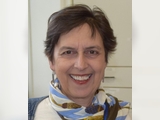GESTAR II Seminar Series, August 29 at 1:00pm
Join us for a hybrid seminar by Dr. Anne Thompson, Senior Scientist, Atmospheric Chemistry (Emeritus), Earth Sciences Div., Senior Research Faculty, UMBC/GESTAR II. Her talk is titled "The SHADOZ Tropical Network at 25 years: Tropical Ozone Variability and Trends."
Date and Time: Tuesday, August 29, 2023 at 1:00pm
In-person location: Goddard Space Flight Center, Bldg. 33, Rm. E108
Or join us via Teams.
Abstract:
"Initiated in 1998 by NASA and partners in more than 15 nations, the Southern Hemisphere Additional Ozonesondes (SHADOZ) network has collected nearly 10,000 ozone profiles from electrochemical concentration cell ozonesondes flown with radiosondes throughout the tropics and subtropics. These balloon-borne instruments are the only way to sample both stratospheric and tropospheric ozone at high-resolution. I will give examples of how SHADOZ has transformed ozonesonde operations, practices and science over the past 25 years.
1) Through launches coordinated for satellite validation, SHADOZ has supported 20-plus spaceborne instruments, advancing algorithms and enabling detection of instrument drift.
2) Working with the World Meteorological Organization (WMO) and other sonde researchers, SHADOZ has facilitated instrument intercomparisons and pushed ozone profile data accuracy from 15-20% in 1998 to ~2% in total ozone in 2023.
Most important, SHADOZ ozone profiles are a staple in studies of stratospheric and tropospheric ozone. Sonde data have elucidated the structure of the zonal wave-one in tropospheric ozone and impacts of the QBO and ENSO on ozone interannual variability. Our recent trends in free tropospheric and lower stratospheric ozone (Thompson et al., 2021) constitute a standard reference for satellite and model-derived estimates. We find that tropical tropopause height increased in the past 25 years, producing an artifact trend in lower stratospheric ozone. Convection also plays a defining role in modulating ozone structure. Seasonally strong trends over SHADOZ stations point to a decline in convective activity, particularly over southeast Asia (Stauffer et al., 2023)."
Biography:
Dr. Anne M. Thompson joined GESTAR II in 2021 after 26 years working in Goddard's Atmospheric Chemistry and Dynamics Lab (Code 614) and 8 years as a Penn State Meteorology Department Professor. She is best known for theoretical and observational advances in atmospheric chemistry, including (1) characterization of Earth's atmospheric oxidizing capacity and (2) initiating NASA's award-winning Southern Hemisphere Additional Ozonesondes (SHADOZ) network. Dr. Thompson's focus on ozonesonde quality assurance has fostered capacity-building in Asia, South America, and Africa. A veteran of dozens of field campaigns, her 2019 SCOAPE oceanographic cruise validated satellite air pollution observations near offshore oil and gas activity. In 2010-2011, Dr. Thompson was a Fulbright scholar in South Africa. Awards include the AMS Suomi Technology Medal, AGU's Roger Revelle Medal, and membership in the American Academy of Arts and Sciences.
For more information on the GESTAR II Seminar Series, click here.
Tags:
Posted: August 25, 2023, 3:18 PM
